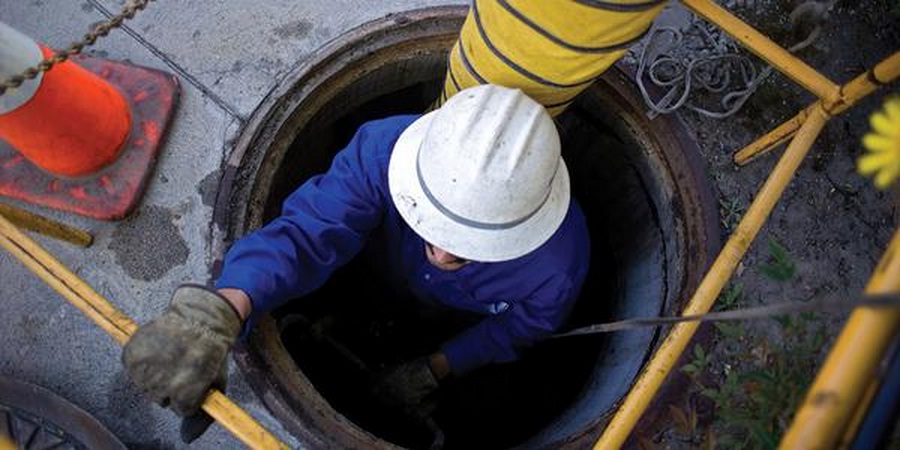 You work about gases which are inherently dangerous. How do you manage that risk so that there’s as little danger as possible to you and your co-workers? Here’s how.
You work about gases which are inherently dangerous. How do you manage that risk so that there’s as little danger as possible to you and your co-workers? Here’s how.
Why You Should Care
You should implement a policy of substitution when it comes to hazardous materials. Why do this? Because it’s the best way to avoid or reduce a hazard. It’s not always easy, of course. And, it’s not always possible to find a non-flammable or less flammable substitute that will do the job you want it to. Start by getting material safety data sheets for all of your hazardous chemicals. Do this before you make any changes.
Choose the least hazardous materials that you think can do the job effectively and safely. And, make sure you understand how to safely handle them.
How To Protect Yourself From Ignition Sources
Many materials you’ll work with are flammable. This is important to understand for a variety of reasons. First, sparks and arcs, hot metal surfaces, and sparks from welding or cutting may ignite certain gases, liquids, or vapors.
Open flames from portable torches are also a risk, as are heating units and boilers, pilot lights, ovens, and driers. Other hot surfaces, like boilers and furnaces, electric lamps, and steam pipes a and even hot ducts pose a risk.
Other possible ignition sources include embers, which can originate from fireboxes, furnaces, and incinerators or foundry cupolas.
All of these can be managed or eliminated by removing open flames and spark-producing machinery or devices from areas where there is flammable or combustible material.
Beware Of Spontaneous Combustion
This is something that doesn’t get talked about a lot, but spontaneous combustion happens when a material comes into contact with air and heats up sufficiently that it ignites. This happens even without an ignition source.
A rag, for example, that’s soaked in oil sitting in the bottom of a pail could theoretically heat up enough to cause a spontaneous combustion of the rag. The same oil-soaked rag wouldn’t be as much of a concern in open air because it has enough contact with moving air that it would prevent excessive heat buildup. The same would be true if the rag were wound into a tight bale because there would be insufficient oxygen for combustion.
Wet hay stored loosely may be combustible if it’s kept in a dry barn where it is allowed to heat up, dry out, and then ignite.
The Importance Of Ventilation
Ventilation stops a lot of these combustible problems. By installing proper ventilation, or making sure an area is properly ventilated, you can dramatically cut down on the risk of ignition and the risk of fire. The amount and type of ventilation is dictated by the kind of material you’re dealing with.
As long as the ventilation keeps the vapor level below occupational exposure limits, there’s very little risk of a fire or explosion, for example. Some laws and regulations require the installation of ventilation hoods in certain working environments, like labs, which effectively clear an area of toxic gases or vapors within seconds. Other times, the use of a multi gas detector is required to minimize or at least control and monitor exposure to gasses.
Storing Flammable or Combustible Material
Storing flammable and combustible liquids is important. Make sure you follow all local laws and specify the kinds Regulations specify the kinds of storage areas, like storage rooms and cabinets, that are allowed for these liquids. For example, in some jurisdictions, containers that are used to store flammable or combustible material that are smaller than 230 liters have to meet specifications spelled out in the law.
Conclusion
If you don’t know where to begin, start with the MSDS for the materials that you’re currently using. You can draw up an emergency plan, as well as contingency and normative plans for how to handle, store, and move these materials. The MSDS will also provide guidance on how to clean up spills and deal with issues like explosions and fires, what is to be used to extinguish a fire, and how to contact the material’s manufacturer for help.
Local fire departments may also be able to help you determine the best course of action when it comes to developing a fire-prevention plan for flammable or combustible material.
Finally, wear personal protective equipment when handling all dangerous or hazardous materials. Even when following all safety protocols, some chemicals are inherently dangerous. The best way to protect your skin, eyes, lungs, and organs from exposure is to wear protective equipment like ventilators/masks, goggles, and protective coats, shoes, and other clothing.
Hannah Marsden is an occupational safety consultant. She enjoys posting about her industry experiences on the internet. Look for her articles mostly on industrial and manufacturing safety sites.
Learn more
With the increasing number of plastic material manufacturing on the rise, its hazardous effects to the health of its workers are also pacing up. A ...
When you think about your work environment, does “safety” come to mind? If you’re like most plants, you probably know that there are things that h ...
Welding is one of the fascinating things because human beings are in a way like some insects. Most people normally stare for a while when they see ...
Electrical safety has to be considered a top priority in the modern workplace and good practices need to be the cornerstone of your health and saf ...
The right equipment will help you finish large jobs faster and with less manpower. However, before you rent or buy heavy equipment for your projec ...





